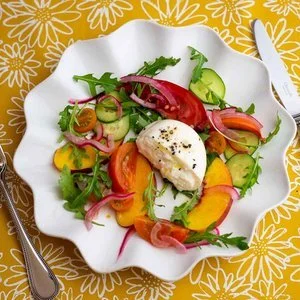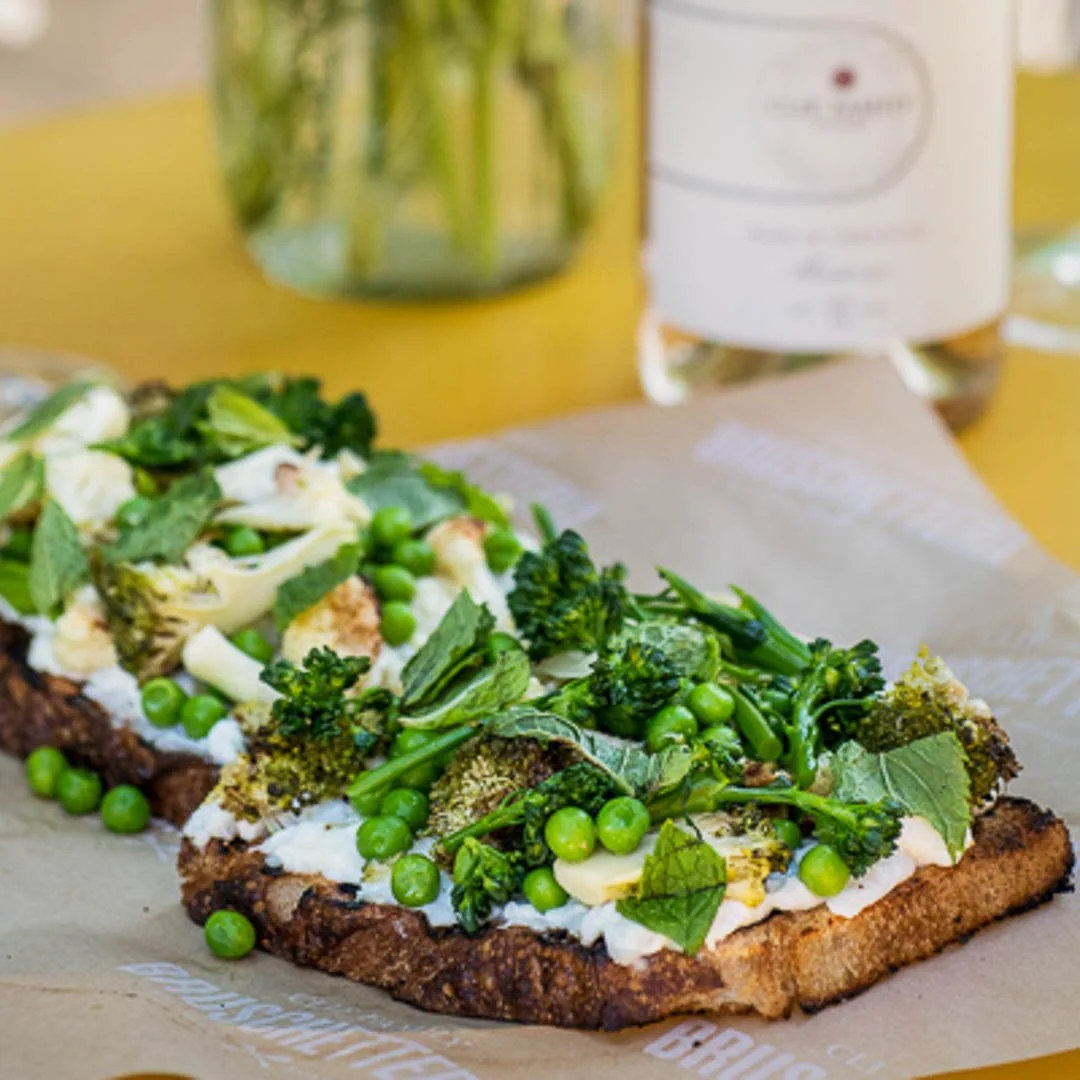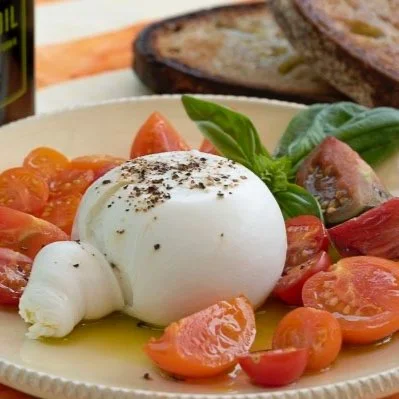Do you recall your first encounter with burrata? I do, and I can’t believe it was only 20 years ago. It seems like this embellished mozzarella has always been with us, surprising and seducing us with its luscious interior. But it’s a relative newcomer, all but unknown in the U.S. until the early 2000s. Now it’s everywhere, a fan favorite on Italian menus from Pasadena to Poughkeepsie. A cheese counter without burrata—why would you do that? Being a minimalist, I’m happy with a plate of toast, a naked ball of burrata and a pepper grinder, but even I enjoy a burrata dressed up on occasion.
San Francisco’s groundbreaking A16 restaurant, which opened in 2004, helped blaze the trail for burrata and southern Italian food in the U.S. That’s where I first tasted this little bundle of joy: a pouch of mozzarella filled with shredded mozzarella and cultured cream. You can read burrata’s origin story here.
Burrata, tomato and peaches
A Napa Valley winery chef turned me on to the combination of burrata, tomatoes and peaches. I’d been seeing versions of this salad online, but his rendition has some appealing refinements.
From chef Derick Kuntz of B Cellars in Napa, I learned that you don’t need a dressing for this salad. It’s more refreshing with just droplets of extra virgin olive oil and a sweet-tart cider syrup (on the salad, not on the cheese). Quick-pickled red onions are another genius touch, as are the cucumbers.
Bruschetta with burrata, peas and roasted broccoli
Burrata loves toast. At the Bruschetteria truck in St. Helena, California, the crew never runs out of clever toppings, but the bruschetta with burrata, peas and roasted broccoli is a personal favorite.
Now that summer is almost over, I’m slow-roasting Sungold cherry tomatoes and scattering them on grilled toast with burrata. Halve the tomatoes, toss with sea salt, olive oil and crumbled dried oregano and bake on a parchment-lined baking sheet at 300ºF until slightly caramelized on the edges, about an hour.
In my view—apparently not widely shared—it’s a crime to overthink burrata. Keep it simple. A vinaigrette or vinegary dressing overwhelms its milky sweetness. Balsamic vinegar really seems out of place on this specialty of southern Italy. Bring the cheese to the table with grilled bread, olive oil and olives or some thinly sliced salumi. Basta.
Simple, simple: Burrata at its summer best
I think Shelley Lindgren, the proprietor of A16, agrees with me. In her book A16 Food & Wine (written with Nate Appleman and Kate Leahy and published by Ten Speed Press), she writes, “To preserve the flavor and texture of this handcrafted cheese, we serve it as simply as possible with sea salt, a drizzle of assertive extra virgin olive oil, and a few crostini on the side.”
The other crime against burrata is serving it cold. You need to store it in the fridge, of course, but bring it to room temperature before serving to experience it at its best.




